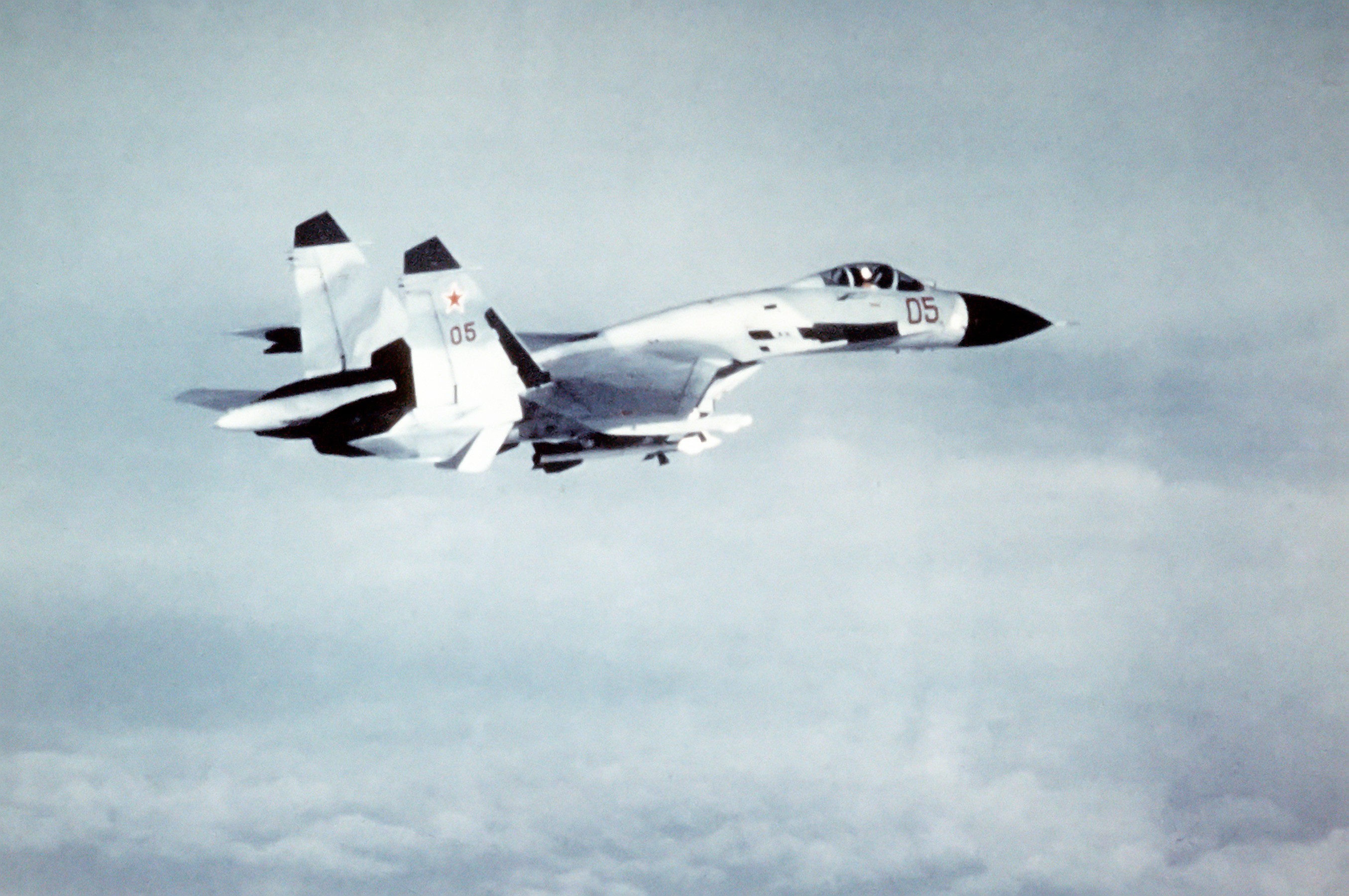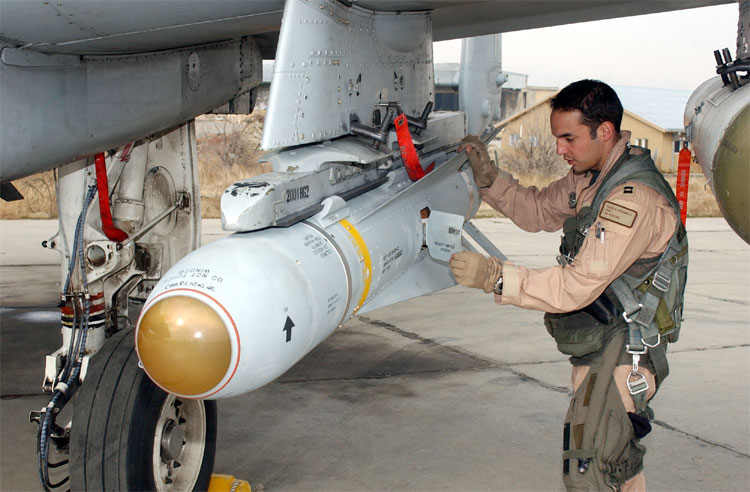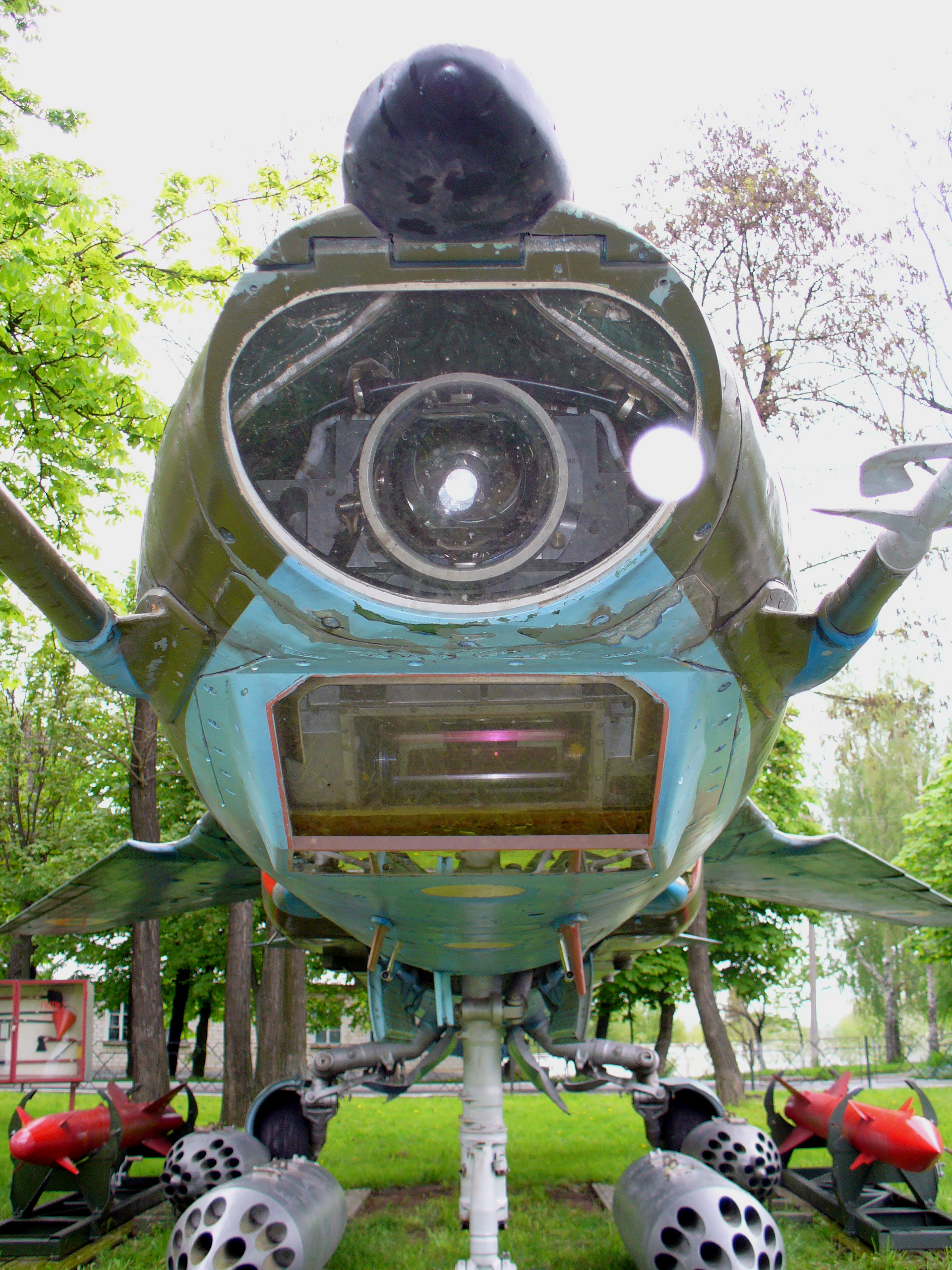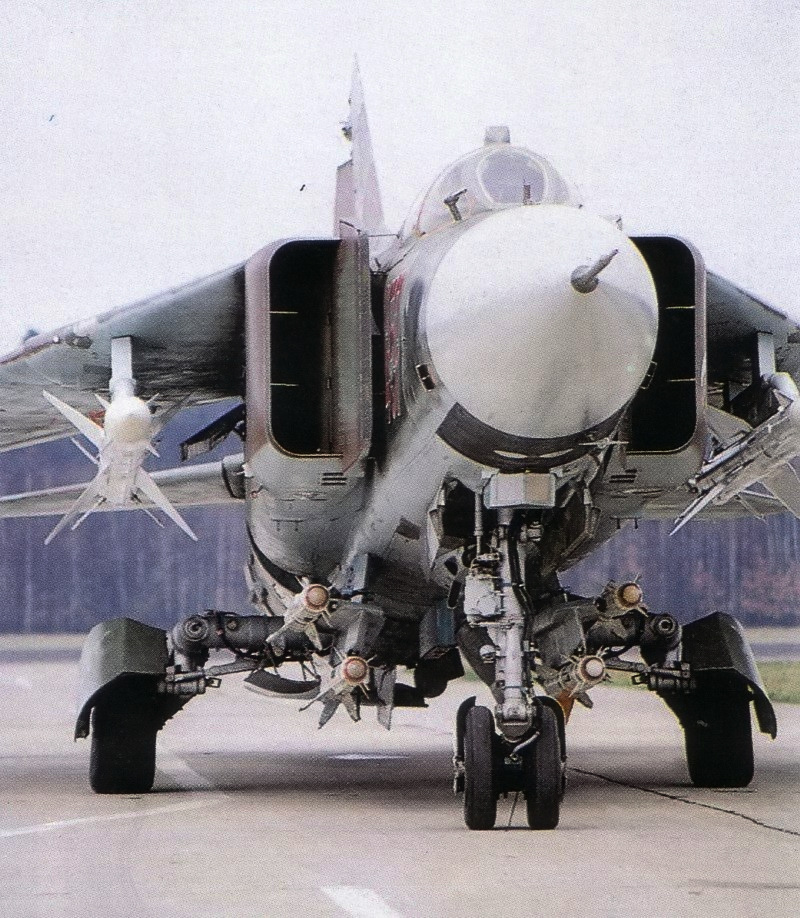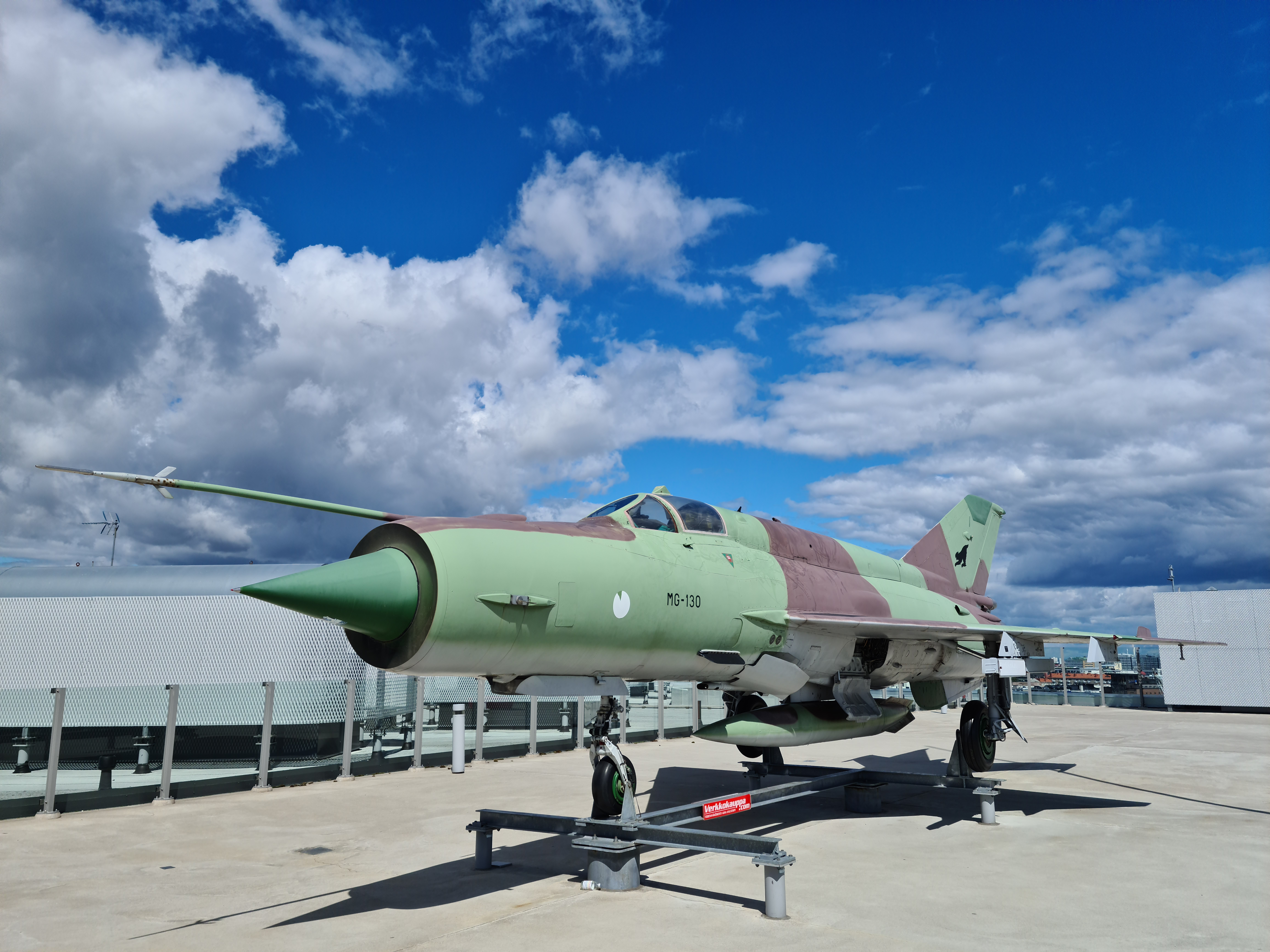|
Anatoly Kvochur
Anatoly Nikolayevich Kvochur (; 16 April 1952 – 15 April 2024) was a Soviet and Russian test pilot. He was awarded the awards Honoured Test Pilot of the USSR (1990) and Hero of the Russian Federation (1992). Biography Anatoly Kvochur was born on 16 April 1952, in the village of Mazurovka, Mohyliv-Podilskyi in the Vinnytsia Oblast of Ukrainian Soviet Socialist Republic. Kvochur studied at the V. M. Komarov Higher Military Flying School at Yeysk, graduating in 1973. He began service as a pilot in the Group of Soviet Forces in Germany. He served for two years before he was discharged from the Soviet Armed Forces in 1977 with a recommendation for admittance to the Fedotov Test Pilot School. He graduated from the school in 1978. From 1978 to 1981 he worked as a test pilot at Komsomolsk-on-Amur, testing Su-17 aircraft and its modifications. He studied further at the Moscow Aviation Institute, graduating in 1981. Kvochur was transferred to the Mikoyan Design Bureau where he pa ... [...More Info...] [...Related Items...] OR: [Wikipedia] [Google] [Baidu] |
Chernivtsi Raion, Vinnytsia Oblast
Chernivtsi Raion () was one of raions of Vinnytsia Oblast, located in southwestern Ukraine. The administrative center of the raion was the urban-type settlement of Chernivtsi. The raion was abolished and its territory was merged into Mohyliv-Podilskyi Raion on 18 July 2020 as part of the administrative reform of Ukraine, which reduced the number of raions of Vinnytsia Oblast to six. The last estimate of the raion population was References Former raions of Vinnytsia Oblast 1990 establishments in Ukraine Ukrainian raions abolished during the 2020 administrative reform {{Vinnytsia-geo-stub ... [...More Info...] [...Related Items...] OR: [Wikipedia] [Google] [Baidu] |
Fedotov Test Pilot School
The Fedotov Test Pilot School or FTPS ('' or '') is one of two test pilot schools in Russia (the other one is a military test pilot school in Akhtubinsk). The school was established in 1947 when Russia was part of the USSR and is named after Aleksandr Vasilyevich Fedotov, a test pilot who was killed in an aircraft crash in the 1980s. History The school was established in 1947 at the Soviet Union's Gromov Flight Research Institute in Zhukovsky near Moscow, to train personnel involved in conducting test flights primarily within the Russian aviation industry. They underwent theoretical and practical training to allow safe and effective flight testing of the aircraft and on-board equipment. Initially there were three departments: for training test pilots for fixed-wing and rotary wing aircraft; and air navigators to be employed by the Soviet design bureaus (OKB), research institutes (like GFRI, etc.) and production plants. Later, with completion of the initial training schedules ... [...More Info...] [...Related Items...] OR: [Wikipedia] [Google] [Baidu] |
Sukhoi Su-30
The Sukhoi Su-30 (; NATO reporting name: Flanker-C/G/H) is a twin-engine, two-seat supermaneuverable fighter aircraft developed in the Soviet Union in the 1980s by Russia's Sukhoi Aviation Corporation. It is a multirole fighter for all-weather, air-to-air interdiction missions. The Russian Aerospace Forces (VKS) were reported to have 130 Su-30SMs in operation as of 2024. The Su-30 started as an internal development project in the Sukhoi Su-27 family by Sukhoi. From the Su-27UB two-seat trainer, the Su-27PU heavy interceptor was developed. The design plan was revamped and the Su-27PU was renamed to Su-30 by the Russian Defense Ministry in 1996. Of the Flanker family, the Su-27, Su-30, Su-33, Su-34 and Su-35 have been ordered into limited or serial production by the Russian Defense Ministry. Later, different export requirements split the Su-30 into two distinct version branches, manufactured by competing organizations: KnAAPO and the Irkut Corporation, both of which come un ... [...More Info...] [...Related Items...] OR: [Wikipedia] [Google] [Baidu] |
Sukhoi Su-27
The Sukhoi Su-27 (; NATO reporting name: Flanker) is a Soviet Union, Soviet-origin twinjet, twin-engine supersonic Supermaneuverability, supermaneuverable fighter aircraft designed by Sukhoi. It was intended as a direct competitor for the large US fourth-generation jet fighters such as the Grumman F-14 Tomcat and McDonnell Douglas F-15 Eagle, with range, heavy aircraft ordnance, sophisticated avionics and high maneuverability. The Su-27 was designed for air superiority missions, and subsequent variants are able to perform almost all aerial warfare operations. It was designed with the Mikoyan MiG-29 as its complement. The Su-27 entered service with the Soviet Air Forces in 1985. The primary role was long range air defence against American Strategic Air Command, SAC Rockwell B-1 Lancer, Rockwell B-1B Lancer and Boeing B-52 Stratofortress#B-52G, Boeing B-52G and H Stratofortress bombers, protecting the Soviet coast from aircraft carriers and flying long range fighter escort for ... [...More Info...] [...Related Items...] OR: [Wikipedia] [Google] [Baidu] |
Air-to-surface Missile
An air-to-surface missile (ASM) or air-to-ground missile (AGM) is a missile designed to be launched from military aircraft at targets on land or sea. There are also unpowered guided glide bombs not considered missiles. The two most common propulsion systems for air-to-surface missiles are rocket motors, usually with shorter range, and slower, longer-range jet engines. Some Soviet Union, Soviet-designed air-to-surface missiles are powered by ramjets, giving them both long range and high speed. Missile guidance, Guidance for air-to-surface missiles is typically via laser guidance, infrared homing, infrared guidance, optical guidance or via satellite guidance signals. The type of guidance depends on the type of target. Ships, for example, may be detected via passive radar or active radar homing, which is less effective against multiple, small, fast-moving land targets. There is some cross-over between air-to-surface missiles and surface-to-surface missiles. For example, there was ... [...More Info...] [...Related Items...] OR: [Wikipedia] [Google] [Baidu] |
Air-to-air Missile
An air-to-air missile (AAM) is a missile fired from an aircraft for the purpose of destroying another aircraft (including unmanned aircraft such as cruise missiles). AAMs are typically powered by one or more rocket motors, usually solid-fuel rocket, solid fueled but sometimes liquid-fuel rocket, liquid fueled. Ramjet engines, as used on the Meteor (missile), Meteor, are emerging as propulsion that will enable future medium- to long-range missiles to maintain higher average speed across their engagement envelope. Air-to-air missiles are broadly put in two groups. Those designed to engage opposing aircraft at ranges of around 30 km to 40 km maximum are known as short-range or "within visual range" missiles (SRAAMs or WVRAAMs) and are sometimes called "dogfight" missiles because they are designed to optimize their agility rather than range. Most use infrared guidance and are called heat-seeking missiles. In contrast, medium- or long-range missiles (MRAAMs or LRAAMs), which ... [...More Info...] [...Related Items...] OR: [Wikipedia] [Google] [Baidu] |
Mikoyan MiG-31
The Mikoyan MiG-31 (; NATO reporting name: Foxhound) is a supersonic interceptor aircraft developed for the Soviet Air Forces by the Mikoyan design bureau as a replacement for the earlier MiG-25 "Foxbat"; the MiG-31 is based on and shares design elements with the MiG-25. The MiG-31 is one of the fastest known operational combat aircraft in the world as of 2021, with a top speed around . It continues to be operated by the Russian Aerospace Forces following the end of the Cold War and the collapse of the Soviet Union in 1991. The other operator, the Kazakh Air Defence Forces, retired the type in 2023. The Russian Defence Ministry expects the MiG-31 to remain in service until at least 2030; that was confirmed in 2020 when an announcement was made to extend the service lifetime of the existing airframes from 2,500 to 3,500 hours. Development Background The single-seat MiG-25 could achieve high speed, altitude, and rate of climb, but it lacked manoeuvrability at interceptio ... [...More Info...] [...Related Items...] OR: [Wikipedia] [Google] [Baidu] |
Mikoyan MiG-29
The Mikoyan MiG-29 (; NATO reporting name: Fulcrum) is a twin-engine fighter aircraft designed in the Soviet Union. Developed by the Mikoyan design bureau as an air superiority fighter during the 1970s, the MiG-29, along with the larger Sukhoi Su-27, was developed to counter U.S. fighters such as the McDonnell Douglas F-15 Eagle and the General Dynamics F-16 Fighting Falcon. The MiG-29 entered service with the Soviet Air Forces in 1983. While originally oriented towards combat against any enemy aircraft, many MiG-29s have been furnished as multirole fighters capable of performing a number of different operations, and are commonly outfitted to use a range of air-to-surface armaments and precision munitions. The MiG-29 has been manufactured in several major variants, including the multirole Mikoyan MiG-29M and the navalised Mikoyan MiG-29K; the most advanced member of the family to date is the Mikoyan MiG-35. Later models frequently feature improved engines, glass cockpi ... [...More Info...] [...Related Items...] OR: [Wikipedia] [Google] [Baidu] |
Mikoyan MiG-27
The Mikoyan MiG-27 (; NATO reporting name: Flogger-D/J) is a variable-sweep wing, variable-sweep attack aircraft, ground-attack aircraft, originally built by the Mikoyan, Mikoyan-Gurevich design bureau in the Soviet Union and later licence-produced in India by Hindustan Aeronautics as the ''Bahadur'' ("Valiant"). It is based on the Mikoyan-Gurevich MiG-23 fighter aircraft, but optimised for air-to-ground attack. Unlike the MiG-23, the MiG-27 did not have widespread use outside Russia, as most countries opted for the Mikoyan-Gurevich MiG-23, Mikoyan-Gurevich MiG-23BN and Sukhoi Su-22 instead. As of late 2023, all Russian, Indian, Sri Lankan, Ukrainian, and Kazakh MiG-27s have been retired, bringing the type's service to an end. Design and development The MiG-27 shares the basic airframe of the MiG-23, but with a revised nose – nicknamed "''Utkonos''" ("Platypus") or "''Gena the Crocodile, Krokodil Gena''" in Russian service, first introduced on the MiG-23B. Dissatisfaction ... [...More Info...] [...Related Items...] OR: [Wikipedia] [Google] [Baidu] |
Mikoyan-Gurevich MiG-23
The Mikoyan-Gurevich MiG-23 (; NATO reporting name: Flogger) is a variable-sweep wing, variable-geometry fighter aircraft, designed by the Mikoyan, Mikoyan-Gurevich OKB, design bureau in the Soviet Union. It is a third-generation jet fighter, alongside similar Soviet aircraft such as the Sukhoi Su-17, Su-17 "Fitter". It was the first Soviet fighter to field a look-down/shoot-down radar, the RP-23 Sapfir, and one of the first to be armed with beyond-visual-range missiles. Production started in 1969 and reached large numbers with over 5,000 aircraft built, making it the most produced variable-sweep wing aircraft in history. The MiG-23 remains in limited service with some export customers. The basic design was also used as the basis for the Mikoyan MiG-27, a dedicated ground-attack variant. Among many minor changes, the MiG-27 replaced the MiG-23's nose-mounted radar system with an optical panel holding a laser designator and a TV camera. Development The MiG-23's predecessor, th ... [...More Info...] [...Related Items...] OR: [Wikipedia] [Google] [Baidu] |
Mikoyan-Gurevich MiG-21
The Mikoyan-Gurevich MiG-21 (; NATO reporting name: Fishbed) is a supersonic jet fighter and interceptor aircraft, designed by the Mikoyan-Gurevich Design Bureau in the Soviet Union. Its nicknames include: "''Balalaika''", because its planform resembles the stringed musical instrument of the same name; "''Ołówek''", Polish for "pencil", due to the shape of its fuselage, and "''Én Bạc''", meaning "silver swallow", in Vietnamese. Approximately 60 countries across four continents have flown the MiG-21, and it still serves many nations seven decades after its maiden flight. It set aviation records, becoming the most-produced supersonic jet aircraft in aviation history, the most-produced combat aircraft since the Korean War and, previously, the longest production run of any combat aircraft. Development Origins The MiG-21 jet fighter was a continuation of Soviet jet fighters, starting with the subsonic MiG-15 and MiG-17, and the supersonic MiG-19. A number of experime ... [...More Info...] [...Related Items...] OR: [Wikipedia] [Google] [Baidu] |
Mikoyan
Russian Aircraft Corporation "MiG" (), commonly known as Mikoyan and MiG, is a Russian aerospace and defence company headquartered in Begovoy District, Moscow. Mikoyan was the successor to the Soviet Mikoyan and Gurevich Design Bureau (Микоя́н и Гуре́вич, МиГ; OKB-155 design office prefix ''MiG'') founded in 1939 by aircraft designers Artem Mikoyan and Mikhail Gurevich. Mikoyan were notable for their fighter and interceptor aircraft which became a staple of the Soviet Air Force and Russian Air Forces, nations within the Soviet sphere of influence, and other nations such as India and many Arab states. Mikoyan aircraft were frequently used in aerial confrontations with American and allied forces during and since the Cold War, and have become commonly featured aircraft in popular culture. Mikoyan aircraft were the most produced jet fighter family. In 2006, Mikoyan became a division of the United Aircraft Corporation in a merger with Ilyushin, Irk ... [...More Info...] [...Related Items...] OR: [Wikipedia] [Google] [Baidu] |


